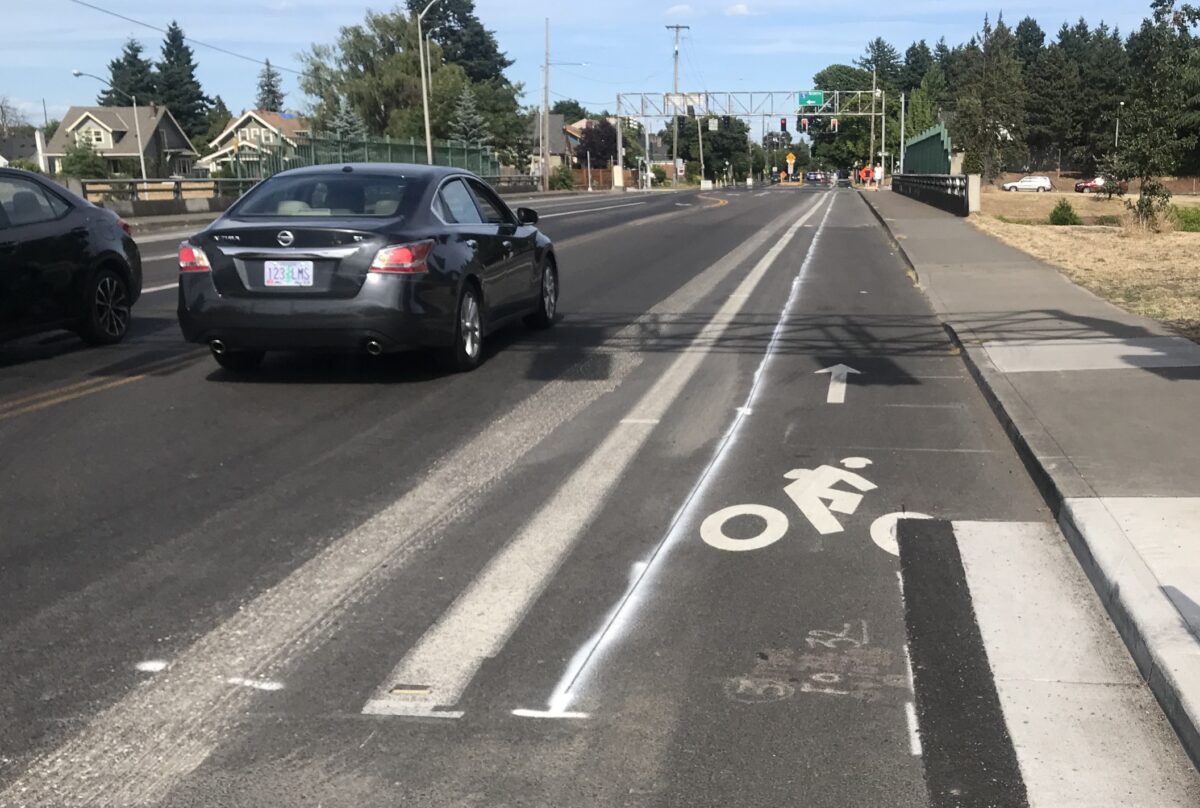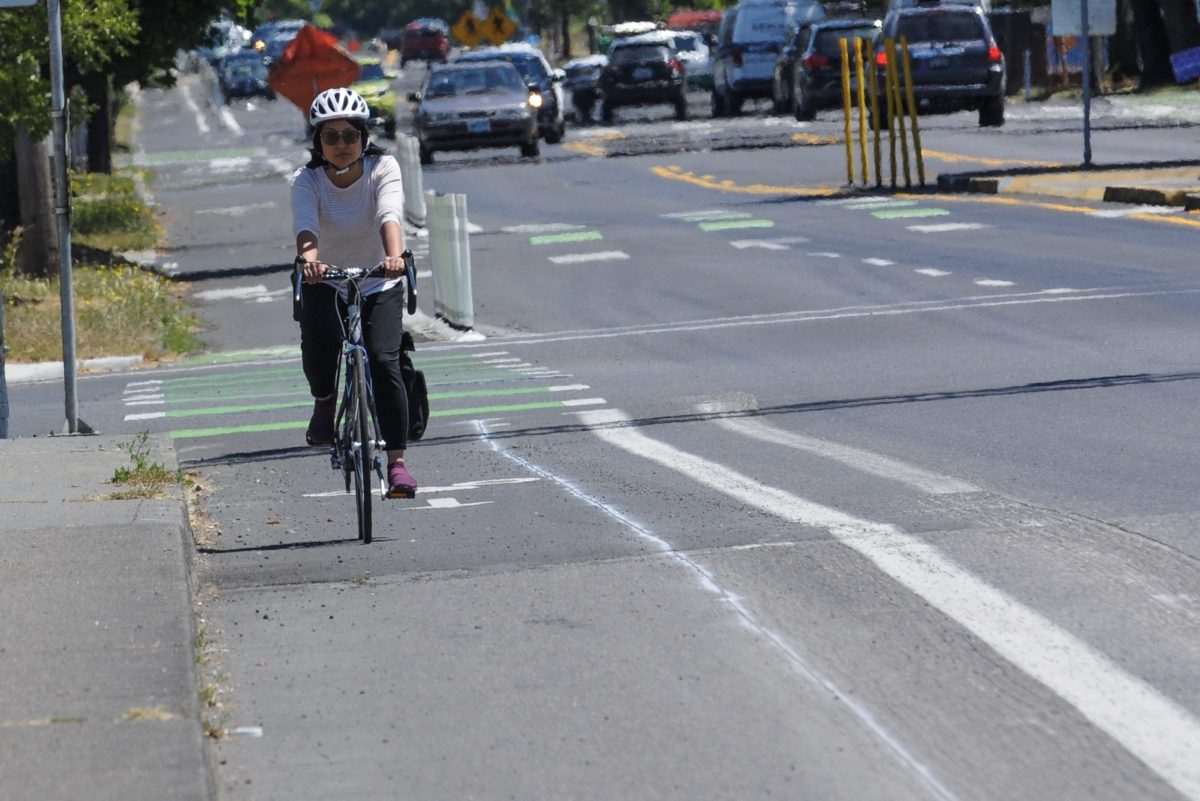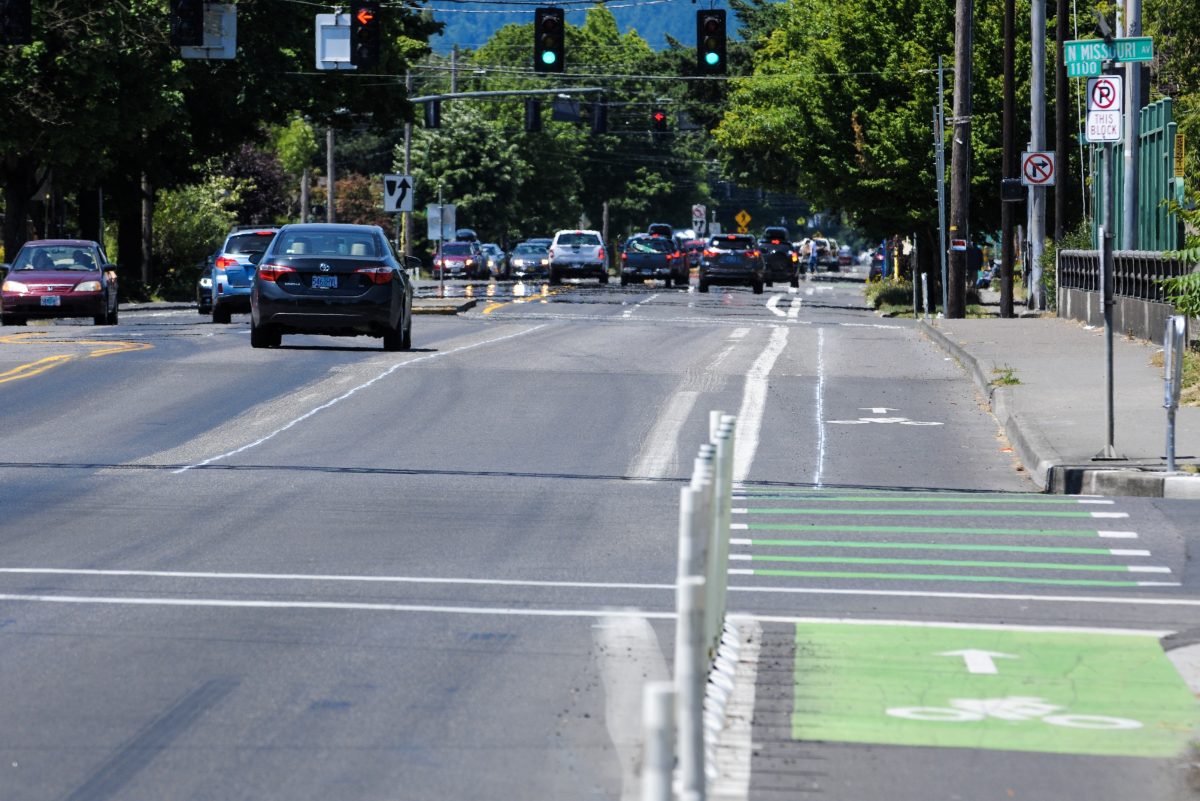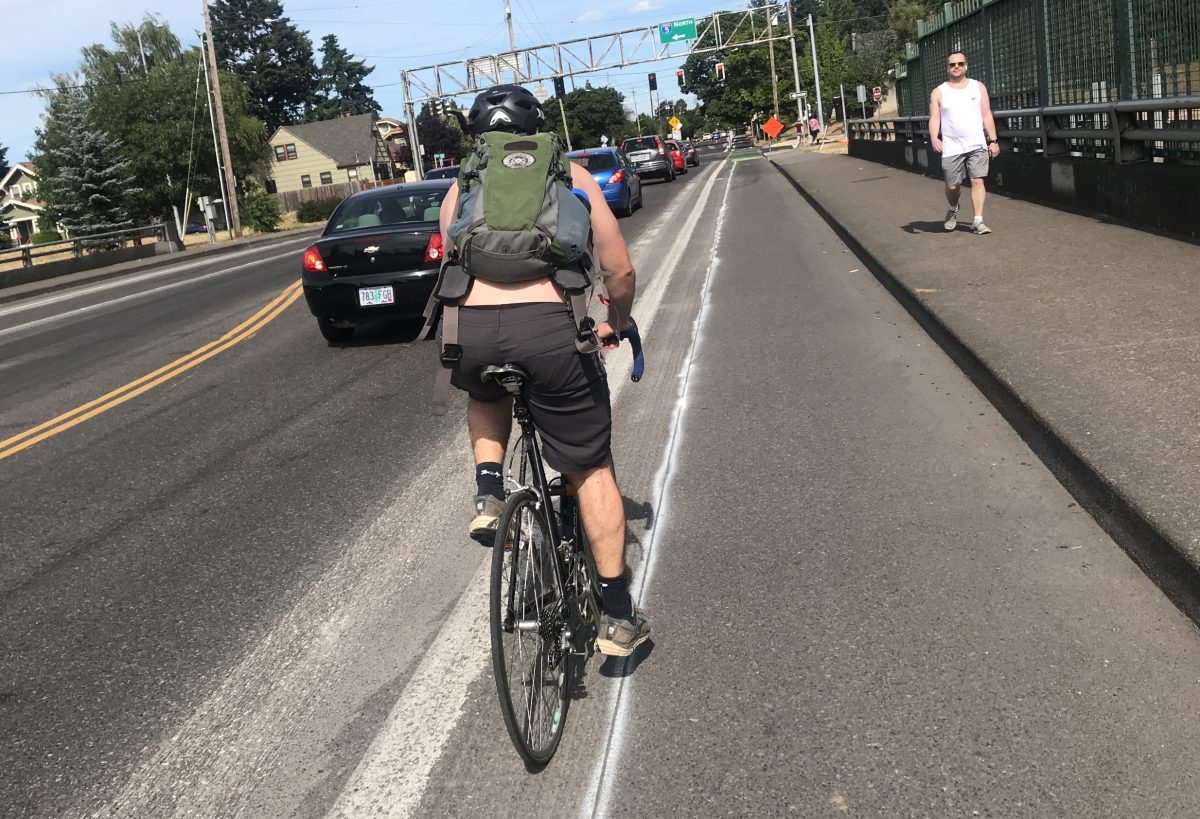
(Photos: J. Maus/BikePortland)
10 months after the City of Portland widened the bike lanes on North Rosa Parks Way (where it crossing Interstate 5) the Oregon Department of Transportation wants to narrow them.


A few days ago I noticed the outside buffer stripe of the new bike lane and one of the other lanes had been ground off by work crews. A new, preliminary line has been laid down. Once fully re-striped, the bike lane will be 1.5 feet narrower. The width of the old bike lane (not counting buffer stripe) was 6.5 feet. The new one will be just five feet wide.
“There was a miscommunication between ODOT and PBOT.”
— Don Hamilton, ODOT
What’s going on here?
When PBOT crews striped the Rosa Parks Way project, they continued the lane widths on the section that goes over I-5. This is noteworthy because ODOT and PBOT have different ideas about how wide lanes should be. And ODOT has jurisdiction to all streets and intersections that cross interstates and interstate access ramps. Several weeks ago I heard a rumor from a source at the City of Portland that ODOT was no on board with PBOT’s striping.
As you might guess, PBOT is much more comfortable striping wider bike lanes and narrower general purpose lanes that ODOT is. Broadly speaking, ODOT prefers wider lanes for drivers and narrower lanes for bicycle users — especially around freeways.


Advertisement
According to ODOT’s Highway Design Manual (Pedestrian and Bicycle Chapter), the standard width for bike lanes is 6 feet and the minimum is 4. If the bike lane is next to a curb, as is the case on this section of Rosa Parks, an additional foot is required.
Asked for comment, ODOT Region 1 Public Information Officer Don Hamilton said: “When PBOT did their paving and restripe last summer there was a miscommunication between ODOT and PBOT, resulting in lane widths that could not be approved by ODOT for a freeway interchange being installed. PBOT is now changing the lane widths to ODOT standards.”
Hamilton confirmed with me today that ODOT will reduce the bike lane width to five feet and will maintain the two-foot buffer. By comparison, PBOT had striped a 6.5-foot bike lane with a two foot buffer (which was even narrower than the 7-foot wide lane with 3-foot buffer that initially proposed).
PBOT Commissioner Chloe Eudaly’s Chief of Staff Marshall Runkel told me he’s aware of the situation (it came up at the recent PBOT Bicycle Advisory Committee meeting). “It’s a tough situation,” he shared via email today, “[we’re] working on a systemic fix.”
This isn’t be the first time the city and state have disagreed about a bike lane. Recall the SE 26th Avenue Bike Lane Saga that culminated last year. In that case, ODOT felt the bike lane was unsafe and wanted to remove it entirely in exchange for granting PBOT the right to create a bikeway and safer crossing of SE Powell two blocks over.
UPDATE, 3:24 pm: Asked for a rationale to re-stripe this section of the street, ODOT’s Hamilton said: “This is not some bureaucratic exercise done to annoy bicyclists. We follow ODOT standards set for freeways that will make the road safer for people who choose to drive. And let’s remember that the result is an improvement from a 5-foot bike lane less than a year ago to a 5-foot bike lane with a 2-foot buffer.”
— Jonathan Maus: (503) 706-8804, @jonathan_maus on Twitter and jonathan@bikeportland.org
Never miss a story. Sign-up for the daily BP Headlines email.
BikePortland needs your support.

